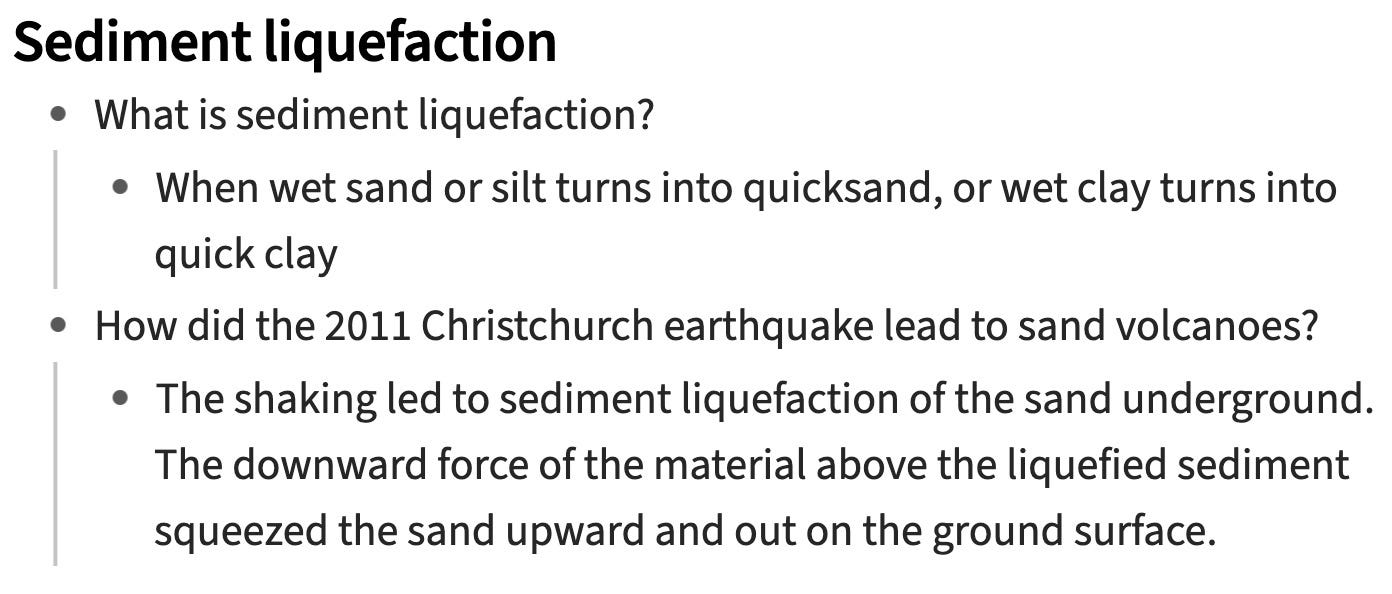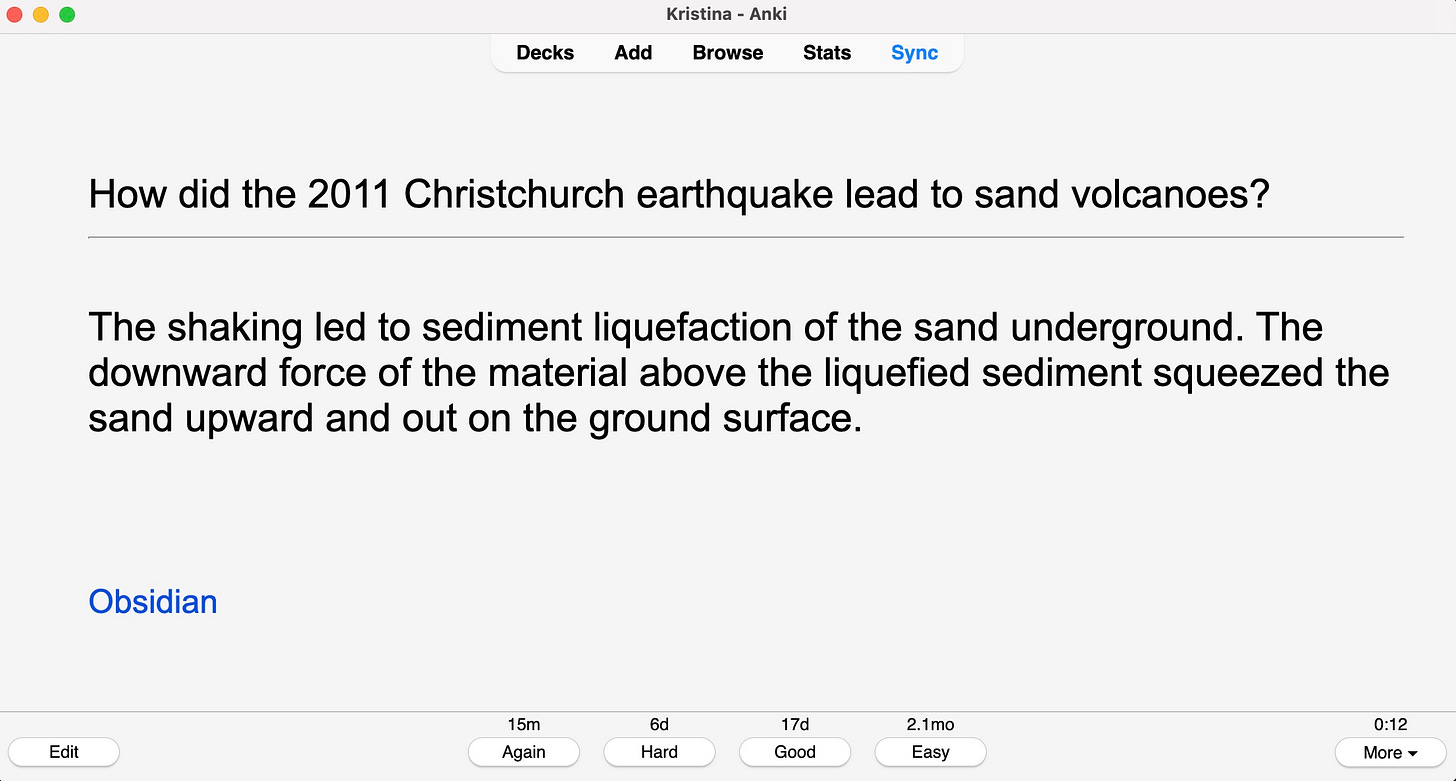How I use Obsidian and Anki to learn the details
I wrote in a previous post about how I use Obsidian for my studies. When used in this way, Obsidian is great for self-explanation, elaboration and connecting new knowledge with previous knowledge, and engaging in these activities will help you learn even if you never look at those exact notes again. While this type of note making works very well for many topics and learning goals, there are some things that are simply better to memorise. Memorising things in Obsidian is difficult because it's a notes app and not a flashcard app: it doesn't automatically bring back and quiz you on the stuff you learned a day, a week or a month ago.
There are many good reasons to commit important facts to memory. Memorising facts has a very bad reputation, conjuring up images of rows of obedient students regurgitating facts to a strict and dry teacher. However, useful knowledge in any domain does necessarily involve having facts at your fingertips rather than tucked away in a document on your computer/phone/cloud service. For school and university students, you need to know things for the exams. For self-directed students and life-long learners wanting to build a solid knowledge base in a topic, you have to learn some details and definitions as well as the bigger picture and connections.
The most straightforward way of adding some quizzing and spaced repetition to your studies is to use Anki or another flashcard app. I use Anki because it is endlessly customisable, but it can also be used by new users without any customisation.
Example of creating Anki cards from Obsidian notes
When I read something, I usually know beforehand whether I want to write a note about it or learn it through Anki. For things I know are going into my Anki deck, I write my notes directly in question-and-answer (Q&A) format. This is not wasted effort - translating important sentences into a Q&A takes a bit of processing and rewording, which in itself helps you learn it.
As an illustration, here is a screenshot of one of my notes on earthquakes:
I then used ChatGPT to convert all these bullet-point questions and answers to this format (there were obviously more than 2 questions, otherwise it would have been quicker to do it without AI):
Using the plug-in Obsidian_to_Anki this gets automatically imported into my Geology flashcard deck, so next time I go through my Anki reviews I see this:
(Note that "Obsidian" here is a link to the file that created the card - this can be useful for either finding the context of the question or for making changes to it.)
Aside: This is perhaps not the best type of question for a flashcard, since the answer is so long. Ideally, each flashcard would have a single fact on it rather than a sequence of events. However, it is good enough for my purposes on this topic, as I want to learn the whole process leading to sand volcano formation. I have understood it well enough that I can do a quick mental visualisation of what is happening rather than recalling the precise words.
A couple of things to note regarding images:
If you have an image as part of the question in Obsidian, the image also gets exported to Anki with no manual file moving required.
I usually also create some Image Occlusion cards for textbook images where I e.g. want to learn the labels (using the Image Occlusion Anki plug-in). This has to be done directly in Anki rather than in Obsidian.
Since Anki gives me the questions in random order, I end up learning some of the facts out of context. However, since I also have the questions in Obsidian, I can go back and quiz myself on a specific topic, with the questions in a logical order so the context is more visible.
Tips for using flashcards
Instead of mechanically going through the reviews as quickly as you can, it pays off to take a bit more care:
Using flashcards well requires a bit of metacognition - eg. deciding which button to press depending on how well you knew the answer. Quizzing yourself has two functions: you find out what you know and don't know, and you strengthen your knowledge.
Depending on the subject, it can be a good idea to have a notepad nearby when doing your Anki reviews so you can draw a quick sketch when doing more visual questions. The idea is to really test your understanding, and going back to the textbook (or looking it up in a different textbook) when you don't fully understand a concept.
Take advantage of the fact that questions come up in random order. This can help you make connections between concepts from two different questions, eg. questions you added recently and questions you added months or years ago. Learning about earthquakes has helped me understand tectonic plate movements a bit better, so when old questions from previous topics such as tectonic plates come up, I can connect these knowledge trees up. This also gives you a nice 'aha' moment.
So don't rush through the Anki reviews. Allowing a bit of extra time when going through the flashcards lets you explore your current knowledge a bit deeper, so you can identify weak points and jot them down so you can look things up once today's reviews are done.




